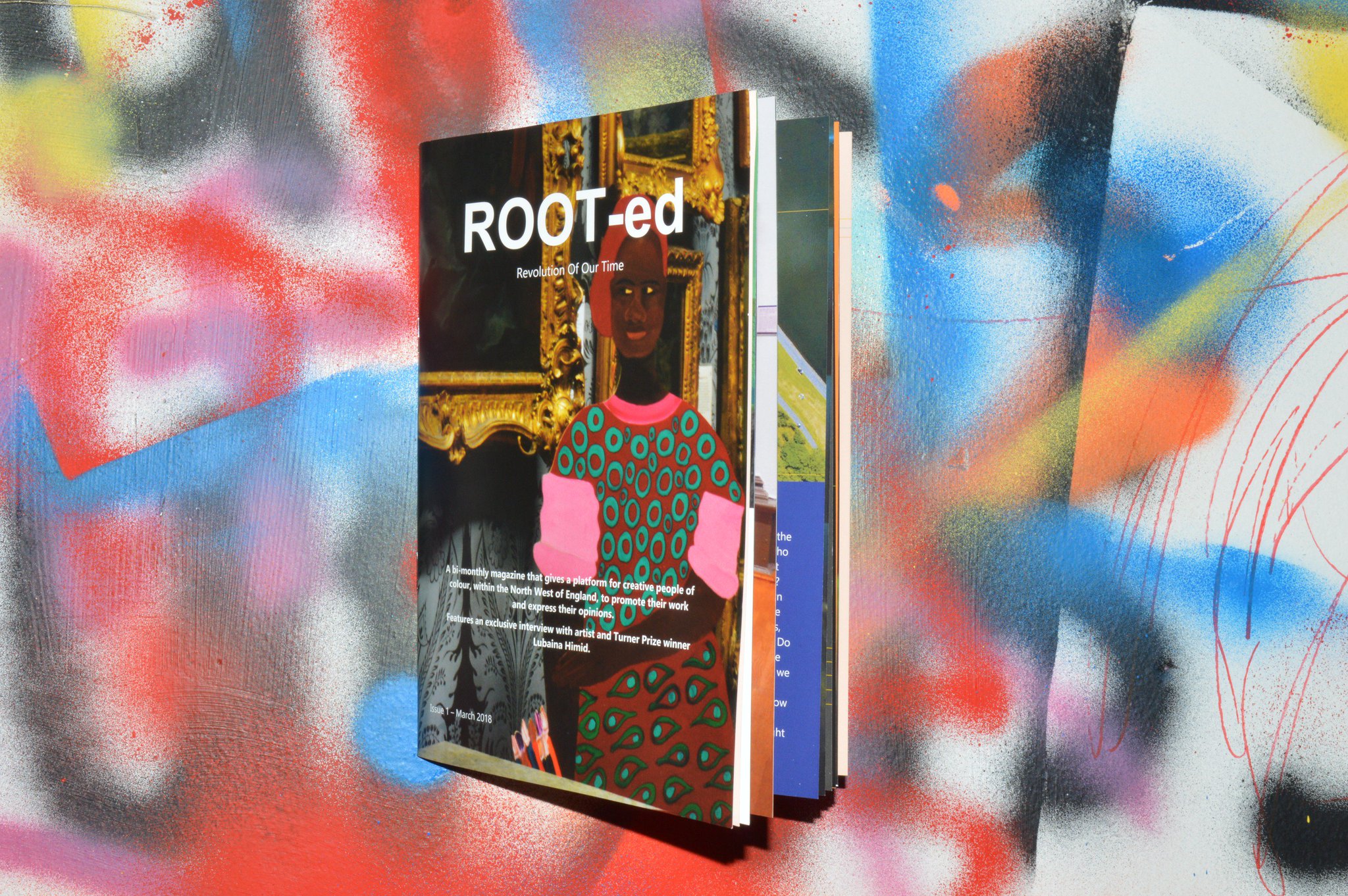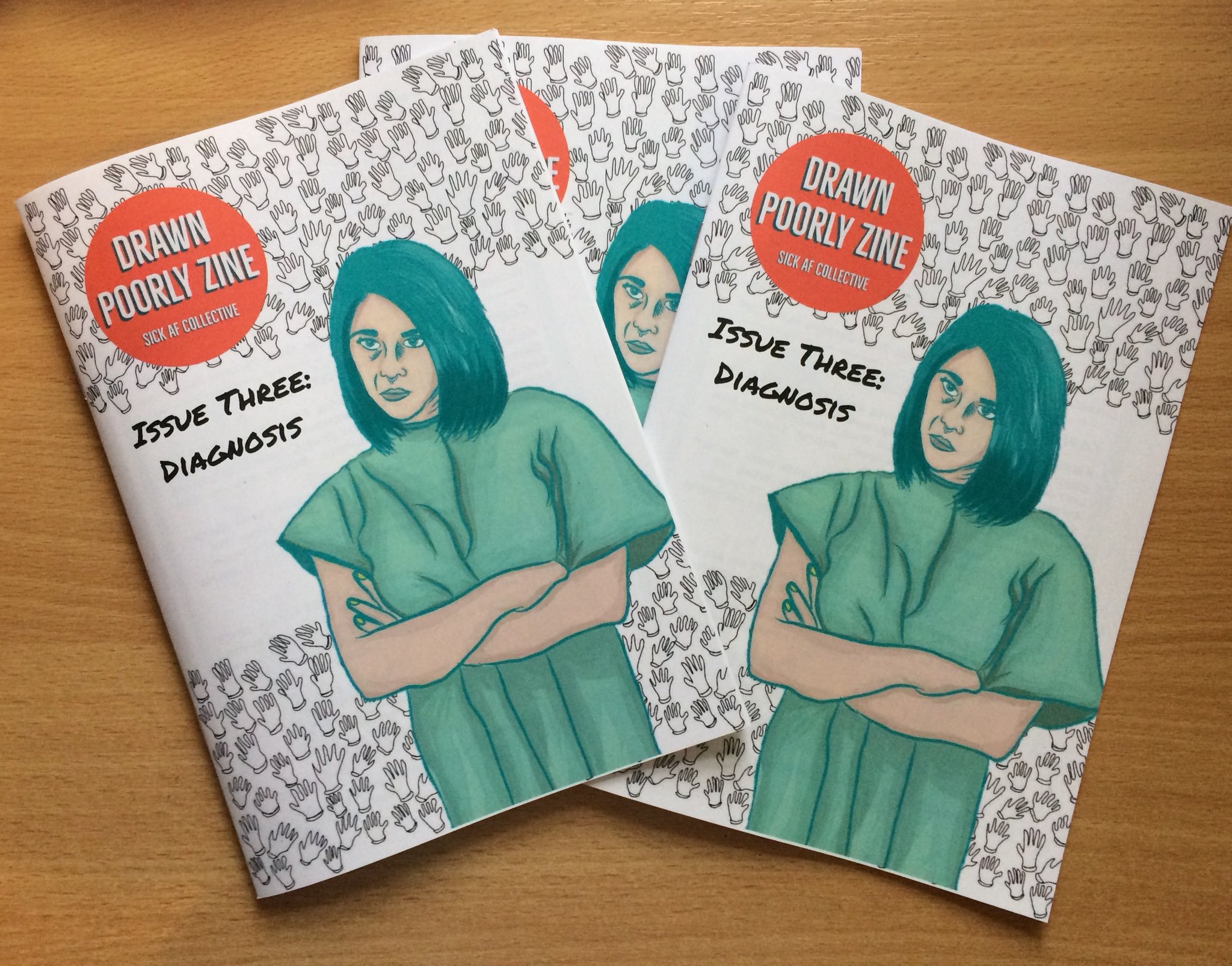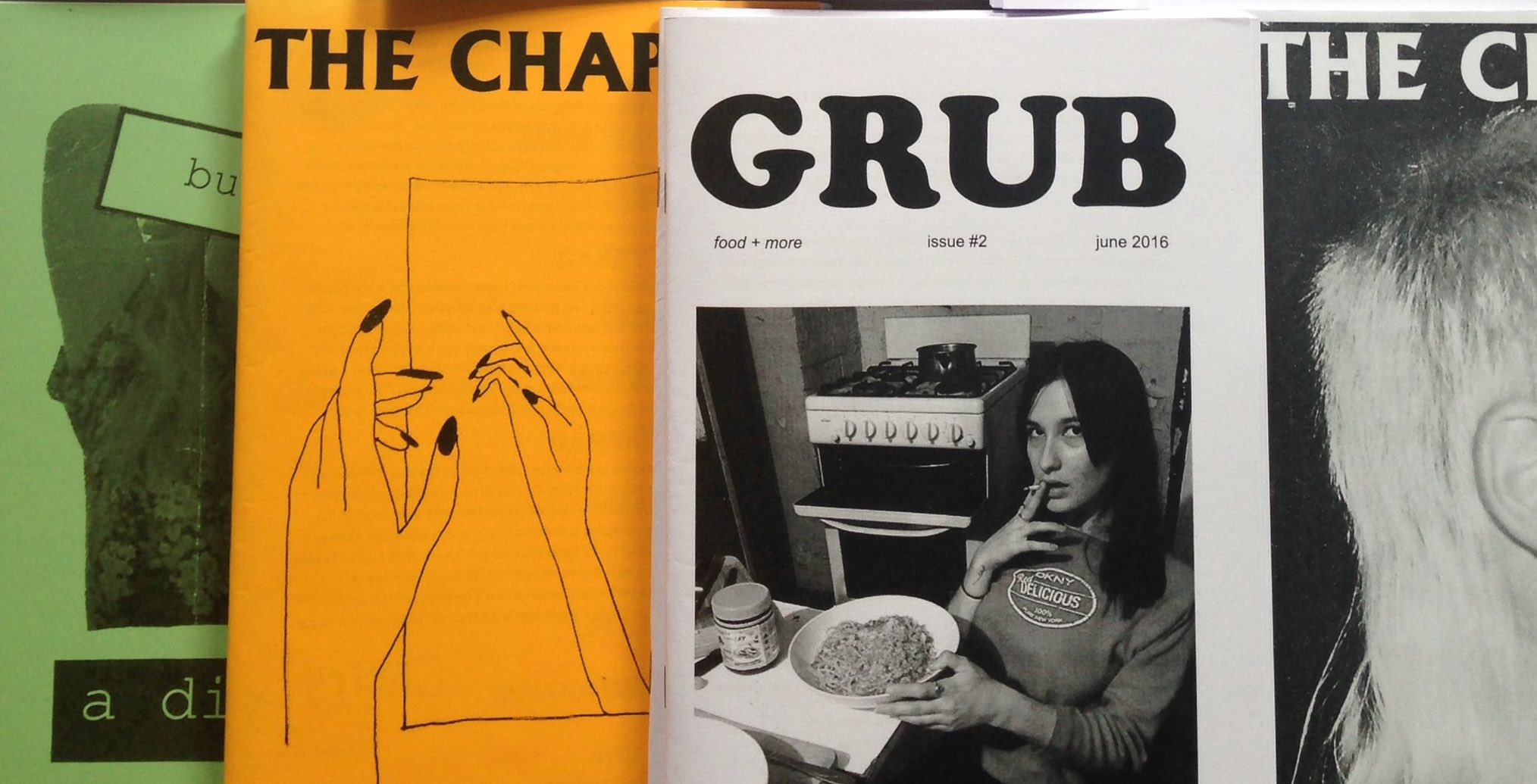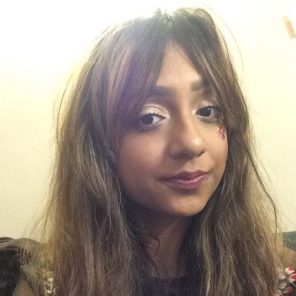Riot grrrl and the joy of more diverse zines

Simran tells us why it’s important to have zines by and for people of colour on your bedside table
zine (ziːn )
A cheaply printed magazine published irregularly by amateurs, esp. one featuring images and ideas reflecting unconventional, often alienated thought.
The riot grrrl movement of the 90s was fuelled by the spirit of punk music and represented a rise in women using and creating their own platforms to enable discussions about issues that directly impacted the lives of women. Body image, sexual harassment, violence and womanhood became fuel for feminists to politicise their anger and challenge the patriarchy.
Central to this movement were zines. Beautifully frugal, these zines were mainly cheap and cheerful black and white booklets with quirky designs coupled with feminist artwork. The simplistic style of zines belied the creative process behind them, which used the talents of writers, activists and artists in a collective effort.
Zines present a refreshing alternative to a capitalist way of consuming media. Rather than satisfying a larger, more shadowy agenda (like a media outlet might), zines are often powered by the experience of marginalised voices. The focus here is on knowledge being shared as opposed to the production of capital. Creative collectives are driven by community, social justice and the championing of creativity, not collecting money.

Rather than satisfying a larger, more shadowy agenda (like a media outlet might), zines are often powered by the experience of marginalised voices.
An intersectional focus to female oppression has not been woven into the feminist fabric. For centuries, women of colour (WoC) and particularly black women have been alienated by movements which did not consider the implications intersections of race and gender had on their structural experience of oppression. Associate Professor of Gender and Women’s Studies Mimi Thi Nguyen, wrote in an essay: ‘… unfortunately, riot grrrl often reproduced structures of racism, classism, and (less so) heterosexism in privileging a generalised “we” that primarily described the condition of mostly white, mostly middle-class women and girls.’ For this reason, the spirit and energy of the Riot Grrrl movement did not extend to women of colour because it was a movement dominated by white women. Bands such as Bikini Kill, Bratmobile and Babes in Toyland became iconic to riot grrrland its goal to liberate women. Ultimately, however, it was a movement dominated by middle class white women, so the output was a brand of feminism operating on white notions of what it means to be a woman.
A prime example of this isan iconic image of Kathleen Hanna, lead singer of Bikini Kill, writing ‘SLUT’ on her body as a symbol of championing female sexuality. This image is awash with ignorance of the experience of black women. Black women have always had the burden of being considered hypersexualised (which is rooted in institutional racism) and therefore fetishised and thus, there was little room for expressing such sexual agency in a positive light. Her actions alienated a population of black and brown women for whom dressing modestly served as liberation. This reclamation of the word ‘slut’ is just one example of riot grrrlbeing underpinned and dominated by the experiences of white women. Issues regarding race are not compatible with a ‘generalised “we.”’

This reclamation of the word ‘slut’ is just one example of riot grrrlbeing underpinned and dominated by the experiences of white women.
The white domination of riot grrrlmeant WoC talents weren’t being showcased in zines which meant the issues directly impacting on WoC weren’t being highlighted. Racism, colourism and race-fuelled hyper-sexualisation were not issues that extended to white women and therefore, the narratives related to such issues were not being covered in zines or songs by riot grrrlmusicians.Issues relevant to people of colour as a whole, don’t tend to be in the mainstream. Or at least when they are, severely watered down version on the topics of slavery dominate. Furthermore, the vocalness of the BAME community regarding decolonisation of the curriculum, is also testament to people of colour narratives not being taken seriously enough.
Despite the initial whiteness of riot grrrl, a growing number of WoC have created their own zines which act as spaces to write about issues present within their communities. The lack of BAME representation – whether this be in term of talent or issues present within the community, has fuelled PoC to move from disillusioned consumers to fervent producers. Crowdfunding platforms have enabled women of colour to curate their own content for publication and have the issues that directly impact on them, explored through collaboration. A prime example of this in action is the creation of ROOT-ed zine – founded by two WoC creatives, Amber Akaunu and Fauziya Johson. The zine consists of essays, poetry, stories and art from women of colour creatives.
Zines such as ROOT-ed present a refreshing alternative to the white, Eurocentric narratives that can often dominate feminist discourse. I have listed below the zines that offer a more refreshing approach by extending to a more diverse audience while keeping alive the DIY nature that was so inherent to riot grrl.
https://www.rootedzine.co.uk/shop
https://grrrlizm.bigcartel.com/
https://drawnpoorlyzine.bigcartel.com/product/issue-one-identity
http://cherrystyles.co.uk/product/the-chapess-zine-6/ (more issues and other zines via link)
Can you recommend any more zines that people should be enjoying? List them in the comments.








